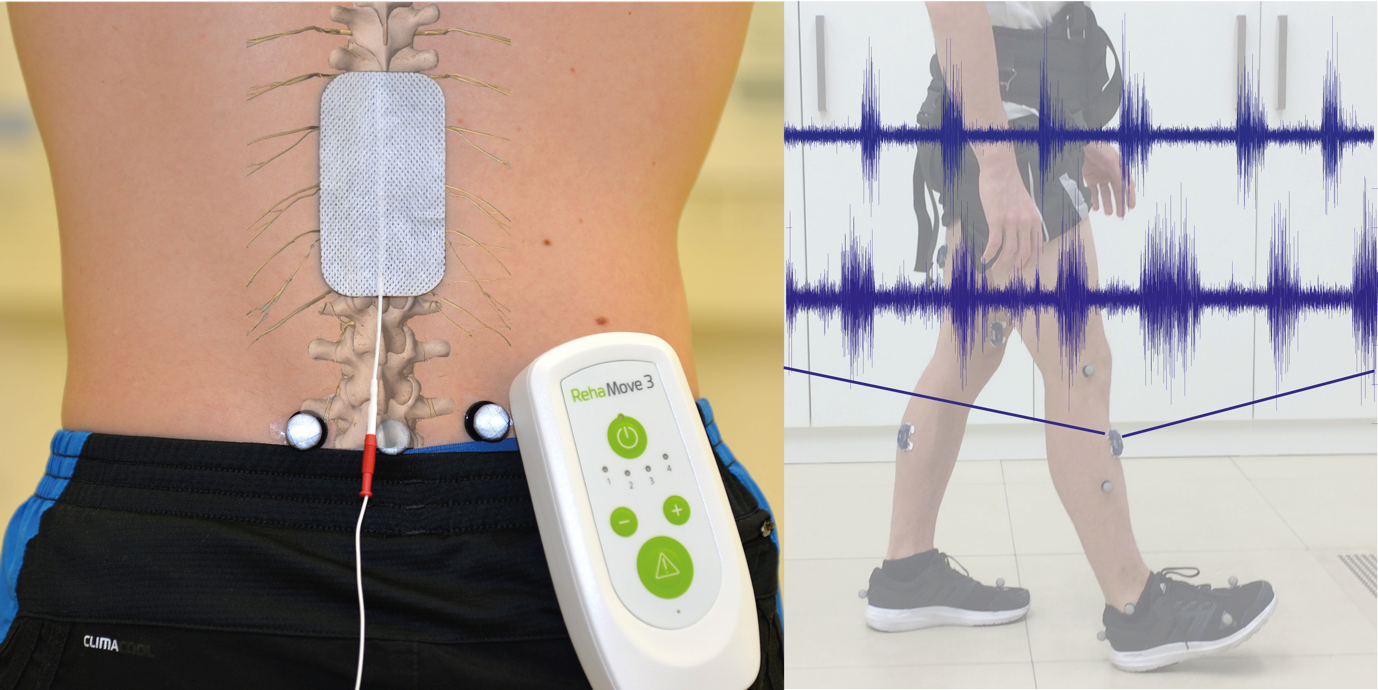Navigation auf uzh.ch
Navigation auf uzh.ch

Vertebrae and spinal nerves are schematically indicated.
Recovery of motor function after an incomplete spinal cord injury (iSCI) is variable and depends on the severity of the injury. The recovery process can be assisted with a wide variety of therapies. Electrical spinal cord stimulation has recently been investigated as therapy assisting technique after iSCI. Improvements of motor function have been reported with the technique and it has been hypothesized that effects are caused by an increase of excitability of spinal networks below the lesion due to the stimulation. Besides the electrical stimulation with implanted electrodes, a transcutaneous version of electrical spinal cord stimulation (tSCS) has been developed. It is applied through surface electrodes placed on the back and lower abdomen. Previous findings suggest that tSCS also improves voluntary movement after iSCI and could also be used in a rehabilitation setting. However, further research is necessary to characterize effects and benefits more precisely. Consequently, this study investigates immediate effects of tSCS on voluntary movements and locomotion in individuals with an iSCI. Furthermore, neurophysiological measurements with and without stimulation should give more insights into the mechanisms of the stimulation. Overall, this study aims to contribute to the characterization and the understanding of tSCS, which might be a possible therapy assisting technique for future rehabilitation after an iSCI.
External project partners
Dr. Ursula Hofstötter, Center for Medical Physics and Biomedical Engineering, MedUni Vienna
For further information please contact: